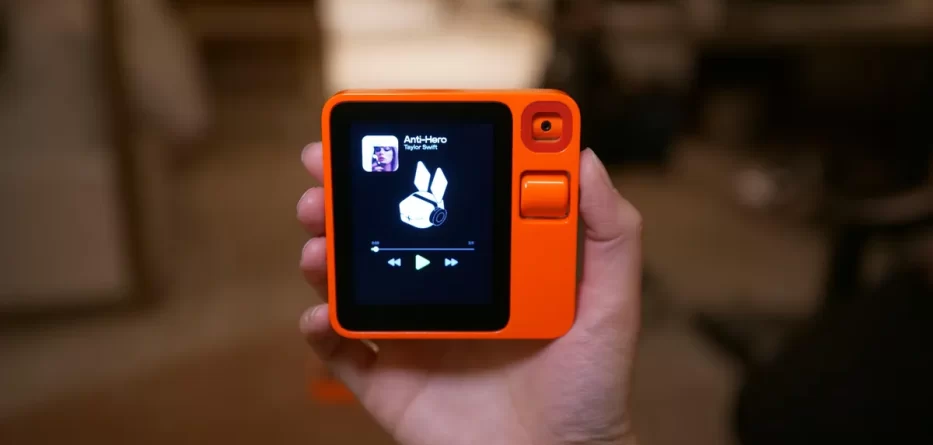Delving Deeper Than the Hype: Our In-Depth Review Explores Whether the Rabbit R1 AI Device Really Transforms Everyday Technology or Just Echoes Empty Promises.
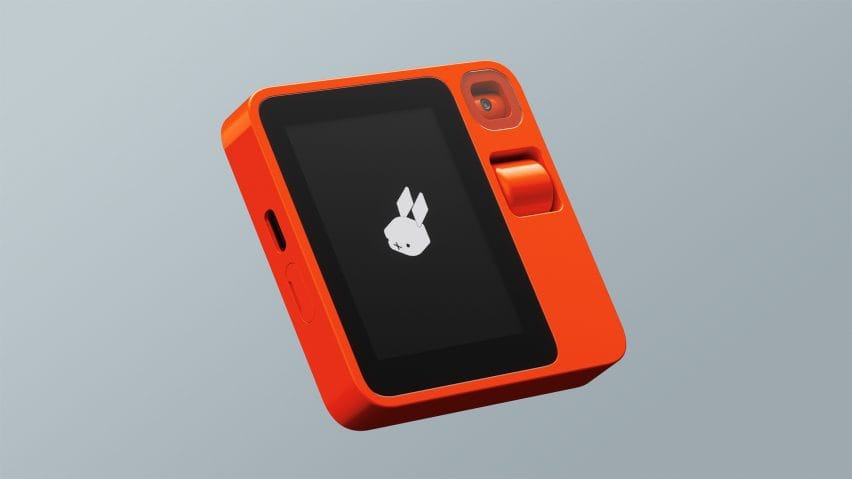
Introduction
Welcome to our in-depth review of the Rabbit R1, a device that promises to revolutionize the way we interact with technology through its advanced AI capabilities. Launched with the ambitious aim of streamlining daily tasks via a sleek, pocket-sized gadget, the Rabbit R1 has generated significant buzz. Is it truly the groundbreaking tool it claims to be, or does it fall short of the lofty expectations set by its creators and tech enthusiasts? In this article, we delve into every aspect of the Rabbit R1, from unboxing and design to its performance and practical applications, to determine if the hype is indeed justified. Join us as we explore whether this AI device can enhance your digital interactions or if it’s just another tech trend that might fade into the background.
Unboxing the Rabbit R1: First Impressions and Setup
Unboxing the Rabbit R1 is an experience designed to be as intriguing as the device itself. From the moment you receive the package, it’s clear that Rabbit aims to make a statement. The packaging is minimalist and elegant, hinting at the advanced technology housed within. As you lift the lid, you’re greeted by the vibrant Leucht orange chassis of the R1, its color popping against the simple, clean background of the box.
Inside, the packaging is compact and efficient, reflecting the device’s design philosophy of simplicity and functionality. You’ll find the R1, neatly encased in a protective layer, along with a charging cable and a concise quick-start guide. The lack of overwhelming pamphlets or unnecessary accessories speaks to Rabbit’s confidence in the R1’s intuitive user experience.
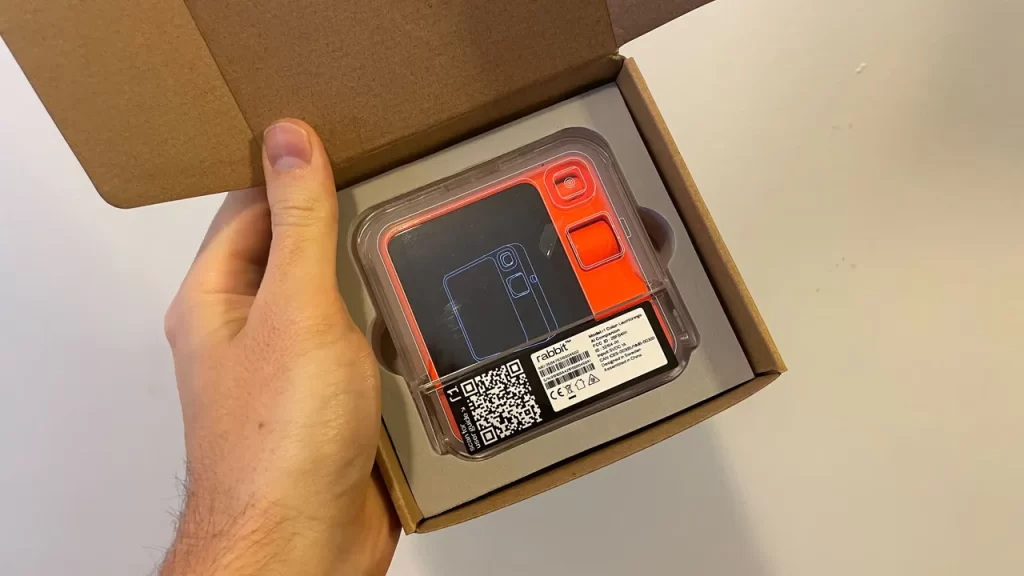
Holding the R1 for the first time, its weight and texture feel premium, with the anodized aluminum body providing a sturdy, yet lightweight feel. This makes the R1 not just a tool, but a potential everyday companion. Its small dimensions, similar to a deck of cards, make it exceptionally portable, fitting comfortably in the palm of your hand or sliding easily into a pocket.
The initial setup is straightforward. Once powered on, the device prompts you to connect to Wi-Fi, which is a simple process facilitated by the responsive touchscreen interface. The R1 also encourages you to create a “rabbithole” account, which is essential for accessing and customizing its full capabilities. This account setup is quick and secures your access to various services and features provided by the R1.
The first connection to your digital life through the Rabbit R1 hints at the possibilities that lie ahead. Whether it’s managing tasks, controlling smart home devices, or accessing online services, the setup process reassures you of the device’s potential to enhance your daily interactions with technology. This seamless start is designed to pave the way for exploring the more complex functionalities and AI features that define the Rabbit R1.
Design and Build Quality: Crafting the Rabbit R1
The Rabbit R1 stands out with its innovative design, crafted for both aesthetic appeal and practical usability. Enveloped in a vibrant Leucht orange, the device’s chassis is made from durable anodized aluminum, giving it a sturdy yet lightweight feel. This choice of material not only enhances the R1’s durability but also its premium look and feel, setting it apart in a market filled with generic gadgets.
The design philosophy of the R1 emphasizes tactile interaction. Unlike most modern devices that rely heavily on touchscreens, the Rabbit R1 reintroduces the satisfaction of physical controls. It features a unique analog scroll wheel, reminiscent of classic iPods, allowing users to navigate through menus with a physical spin. This scroll wheel provides a satisfying tactile response that many users find missing in today’s touch-dominated interfaces.
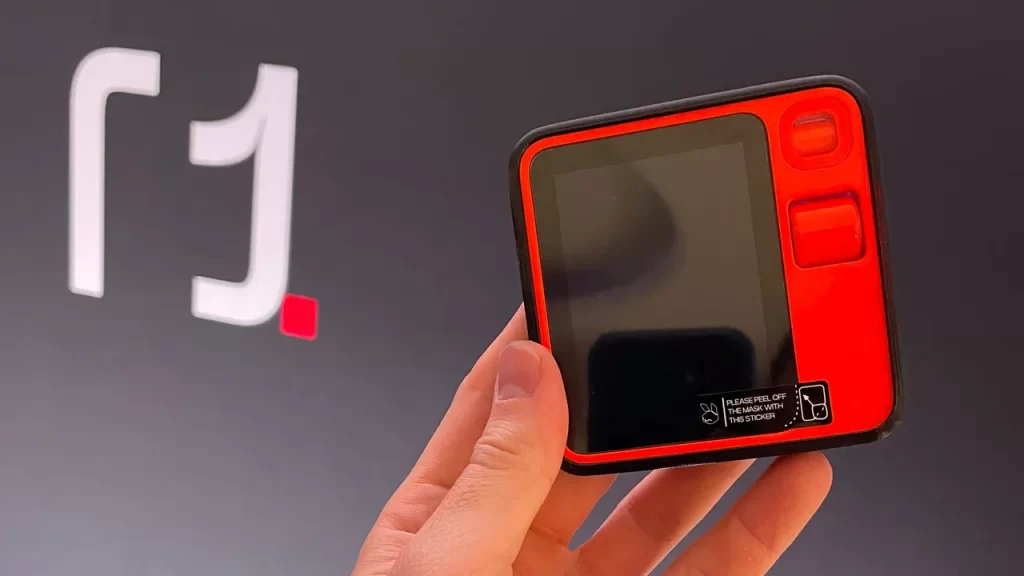
In addition to the scroll wheel, the device includes a push-to-talk button, strategically positioned to facilitate easy one-handed operation. This design decision underscores the R1’s focus on voice-first interactions, making it more accessible and intuitive for users on the go.
The R1’s compact size, comparable to a deck of cards, makes it highly portable and comfortable to carry around. Its design cleverly balances the nostalgic appeal of retro gadgets with the sleekness of modern technology, making it not just a functional device but also a fashion statement.
The build quality extends beyond just looks; it influences the user experience. The Rabbit R1’s construction ensures it can handle the rigors of daily use without compromising on performance or style. Its tactile interfaces, such as the scroll wheel and buttons, provide a reliable and enjoyable way to interact with technology, making the Rabbit R1 not only a tool for productivity but also a delightful gadget to use.
Setup and User Interface: Navigating the Rabbit R1
The setup process for the Rabbit R1 is designed to be straightforward, ensuring users can start exploring its features without unnecessary delays. Upon unboxing, the device greets users with a minimalist setup wizard that guides them through the initial configuration, including connecting to Wi-Fi and understanding basic navigation controls. The simplicity of the setup process highlights Rabbit’s commitment to accessibility, catering to both tech-savvy users and those new to smart gadgets.
The user interface of the Rabbit R1 departs from traditional smartphone layouts, offering a novel experience that emphasizes voice interaction and tactile controls. The main screen is organized into a series of cards, each representing different functionalities like music, transportation, or communication. This card-based system simplifies the interface, allowing users to swipe through options using the analog scroll wheel or tap selections directly on the touchscreen.
The integration of a physical scroll wheel with digital touchpoints facilitates a unique interaction model that blends the tactile feedback of traditional gadgets with the efficiency of modern touch interfaces. This design supports the device’s voice-first approach, where users can initiate commands through the push-to-talk button, streamlining interactions and reducing the reliance on screen navigation.

Overall, the R1’s interface reflects a well-thought-out approach to user experience, balancing innovation with user comfort. The focus on reducing screen time without compromising functionality aligns with Rabbit’s vision of a more intuitive digital assistant. This design philosophy not only makes the R1 stand out in a crowded market but also enhances its appeal as a practical tool for daily tasks.
Performance and Capabilities: Evaluating the Rabbit R1’s Core Strengths
The Rabbit R1 boasts an intriguing blend of hardware and software that promises to handle a broad spectrum of tasks efficiently. Powered by a MediaTek Helio P35 processor and equipped with 4GB of RAM, the R1 is not just about basic tasks; it’s engineered to manage more complex requests through its AI-driven Large Action Model (LAM).
This AI capability is the cornerstone of the R1, enabling it not just to perform tasks but to learn from interactions. This learning ability is crucial for tasks like booking travel, managing emails, or even complex queries that require understanding context rather than just executing simple commands. Users can expect the R1 to handle multiple applications smoothly, thanks to its ample storage of 128GB, allowing extensive data and app management without lag.
However, it’s in the realm of connectivity and ongoing interaction where the R1 truly shines. With support for both Wi-Fi and optional 4G LTE, the device ensures that users can remain connected wherever they go. The inclusion of a rotating camera also adds a layer of interaction, particularly for capturing images or videos from various angles, enhancing its utility as a versatile digital assistant.
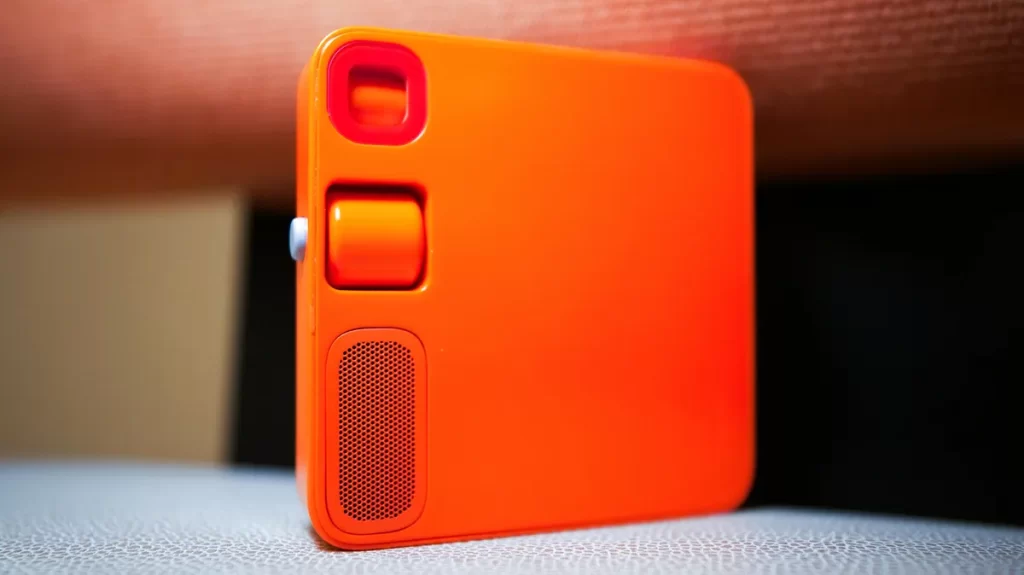
The performance of the Rabbit R1, while impressive in scope, does highlight the device’s reliance on robust internet connections to perform optimally. As it stands, the R1 is a promising tool for those looking to streamline their digital interactions through a single, portable device that offers more than just voice commands. It’s an attempt to redefine what smart devices can do, pushing the boundaries of conventional AI assistants.
AI and Large Action Model (LAM) Technology: The Brain Behind Rabbit R1
At the heart of the Rabbit R1 is its revolutionary Large Action Model (LAM) technology, which sets it apart from typical AI assistants. Unlike traditional models that respond to specific commands, LAM understands context and intent, enabling the R1 to execute complex, multi-step actions based on natural language inputs. This sophisticated AI can learn user preferences and adapt over time, making each interaction more intuitive.
LAM’s integration means that users can engage with their digital environment in more meaningful ways. Whether it’s managing smart home devices, scheduling appointments, or even making travel arrangements, LAM processes the requests with an understanding of both the task and the user’s habits. This capability is powered by a combination of on-device processing and cloud-based computation, ensuring that personal data handling adheres to privacy standards while maintaining quick response times.
The implications of such technology are vast. For instance, LAM can automate tasks across various apps without the need for separate APIs, learning to navigate each app’s interface just as a human would. This not only simplifies the user experience but also enhances the device’s utility by broadening the scope of what can be accomplished with a single command.
As we continue to integrate AI more deeply into our daily lives, technologies like LAM represent a significant leap towards more autonomous, helpful, and understanding digital assistants. The Rabbit R1, with its LAM backbone, is not just performing tasks but is becoming an essential partner in the user’s digital life.
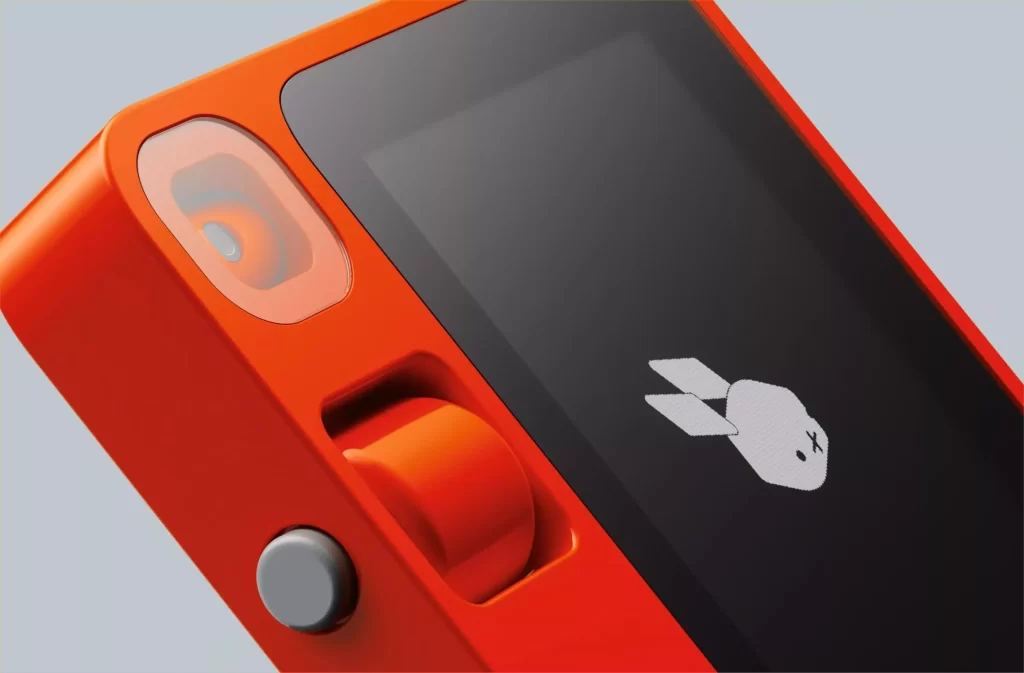
Connectivity and Battery Life: Staying Powered and Connected
The Rabbit R1 is equipped to keep you connected and operational throughout your day. It supports Wi-Fi and Bluetooth 5.0, ensuring seamless integration with a wide range of devices and networks. For those who require constant connectivity, the R1 includes a 4G LTE module, allowing users to stay online even when Wi-Fi isn’t available. This feature is particularly useful for on-the-go users who need reliable access to cloud-based services powered by the R1’s AI.
Battery life is a crucial aspect of any portable device, and the Rabbit R1 addresses this with a battery designed for all-day use. It features a lithium-ion battery with a capacity of 1000mAh, which is modest but optimized for the device’s low-power consumption needs. Charging is handled via a USB-C port, providing fast and convenient charging options. The company claims that the device can last a full day on a single charge under typical usage conditions, though actual longevity will vary based on the intensity of use, especially if cellular data is frequently used.
While the connectivity options put the Rabbit R1 on par with many modern gadgets, its battery life is where users will need to manage expectations. For heavy users, carrying an external power bank might still be necessary, particularly during travel or long days away from power outlets. The R1’s balance of connectivity and battery life reflects its positioning as a device for both casual and power users, emphasizing its role as a versatile AI assistant in various scenarios.
Practical Applications and Limitations: Navigating Real-World Use
The Rabbit R1, with its AI-driven capabilities and connectivity features, offers a range of practical applications that aim to simplify daily tasks and enhance productivity. However, like any pioneering technology, it comes with its set of limitations.
Practical Applications:
- Personal Assistant Features: Utilizing its Large Action Model (LAM), the R1 can perform tasks like scheduling, reminding, and information retrieval through voice commands, making it an excellent tool for managing personal and professional commitments.
- Travel and Navigation: With its connectivity features, the R1 serves well for travel enthusiasts, providing real-time navigation, travel booking, and local recommendations without the need for switching between different apps.
- Visual Identification: The rotating camera and AI capabilities make the R1 adept at recognizing and providing information about objects, landmarks, and documents, which can be particularly useful for educational purposes or in scenarios like shopping.
Limitations:
- Battery Life Constraints: While designed for all-day use, intensive tasks like continuous connectivity and frequent use of AI features can drain the battery quicker than expected, potentially limiting its utility during long days without access to charging.
- App Integration: The device’s functionality highly depends on the integration of third-party services. Users may find the experience less seamless if popular apps and services are not fully integrated or if the integration does not work as smoothly as using the apps natively on a smartphone.
- Learning Curve: Despite its user-friendly design, there’s a learning curve associated with maximizing the R1’s capabilities, especially in understanding the specific voice commands and the manner in which the AI interprets user queries.
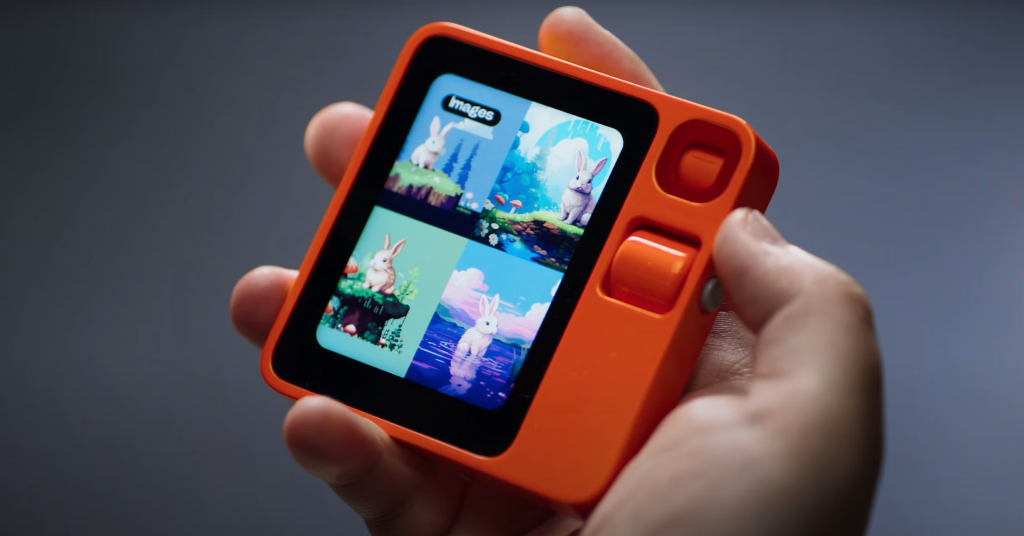
The Rabbit R1 walks a fine line between innovative potential and current technological limitations. It showcases what’s possible with AI integration into everyday life but reminds users that the journey towards a fully autonomous AI assistant is still ongoing. While it offers a glimpse into the future of personal technology, users must manage their expectations and consider how the R1’s features align with their personal or professional needs.
Comparison with Competitors: How Does Rabbit R1 Stack Up?
The Rabbit R1 enters the market as a unique contender in the realm of AI-driven devices, but it faces competition from established technologies and emerging gadgets. Here’s how it compares to some of its main competitors:
Competitors:
- Google Assistant Devices: Known for their deep integration with Android and extensive app ecosystem, Google Assistant devices offer robust voice command features and smart home integration. They excel in data-driven personalization, thanks to Google’s vast data repository.
- Amazon Alexa Devices: Alexa’s strength lies in its widespread adoption and compatibility with a vast array of smart home devices. Its routine and skills features make it highly customizable, though its AI capabilities are more focused on home automation rather than on-the-go tasks.
- Apple Siri Devices: Siri, integrated into all Apple devices, offers seamless integration within the Apple ecosystem, providing a consistent and secure experience across devices. Siri is particularly strong in user privacy and data security.
- Humane AI Pin: A direct competitor in innovative AI wearable tech, the Humane AI Pin focuses on being a discreet, wearable device that offers similar AI interactions through a unique projection-based interface.
Comparative Analysis:
- Innovation: Rabbit R1’s LAM technology and its physical design with a rotating camera offer a distinctive approach not seen in competitors. However, its practical utility and seamless experience may lag behind the more mature ecosystems provided by Google, Amazon, and Apple.
- Portability: Unlike the typically stationary Alexa and Google devices, both Rabbit R1 and Humane AI Pin prioritize mobility. Rabbit R1, however, offers more traditional device interactions with a screen and physical controls, contrasting with Humane AI Pin’s more minimalistic, gesture-based interaction model.
- AI Capability: The R1’s LAM is innovative in its ability to learn user interactions and manage tasks across various apps without needing direct API integration. This stands out from the more fixed-function AI models used by its competitors, which rely heavily on their respective ecosystems and predefined capabilities.
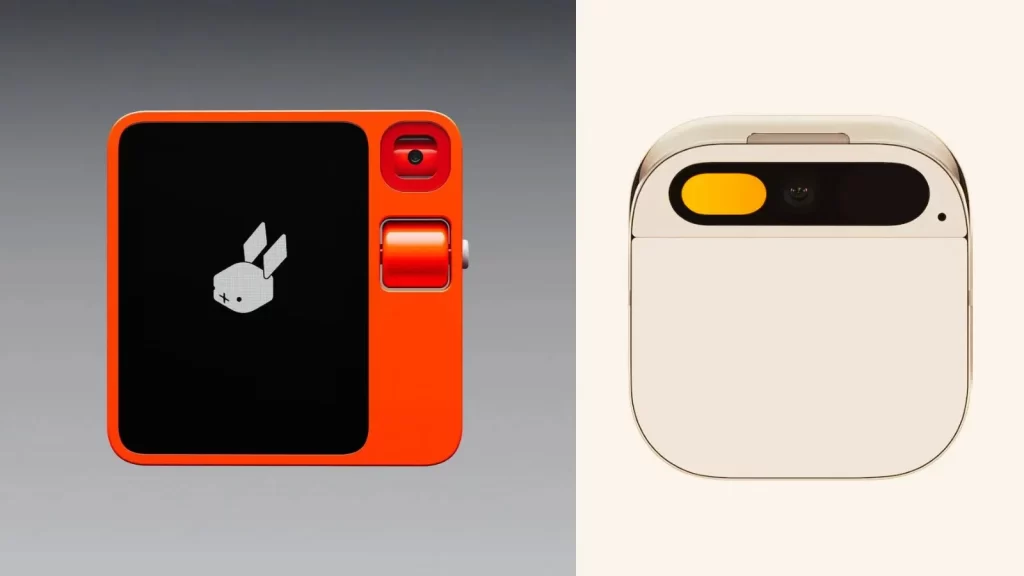
The Rabbit R1’s unique selling point lies in its ambition to act as a universal controller for various apps through AI, setting it apart in a market filled with more specialized but less flexible solutions. This makes it an intriguing choice for tech enthusiasts and early adopters looking for the next big thing in AI interaction.
Price and Value for Money: Is the Rabbit R1 Worth the Investment?
The Rabbit R1, priced at $199, positions itself as a mid-range AI device, making it accessible to a broad audience. This pricing strategy places it below high-end smartphones but on par with or slightly above other specialized AI devices. The price includes the device itself and access to its proprietary RabbitOS and the Large Action Model (LAM) without additional subscription fees, which is a notable advantage in the market.
Value Considerations:
- No Recurring Costs: Unlike many competitors that require monthly subscriptions to access full functionality, the R1 offers full access to its features without ongoing costs. This could make it a more attractive option for users wary of continuous investment.
- Innovative Features: The R1’s unique features such as the rotating camera, analog scroll wheel, and the potential for learning user behaviors offer a distinct experience not readily available in other devices. This innovation adds value for users looking for new technology experiences.
- Long-Term Utility: The real value of the R1 will depend significantly on its ability to integrate smoothly with various digital services and the effectiveness of its AI over time. The more it learns and adapicates, the more valuable it becomes.
Investment Outlook:
Investing in the Rabbit R1 could be seen as a bet on the future of AI interaction in everyday gadgets. For tech enthusiasts and early adopters, the R1’s potential to streamline interactions through a single device could be worth the upfront cost. However, for average consumers, the decision might depend on whether the R1’s performance and AI capabilities can truly replace or enhance the functionality of existing devices enough to justify the expense.
In conclusion, the Rabbit R1 offers significant value for its price, especially for those interested in the cutting-edge of AI technology. Its lack of recurring fees and innovative design could make it a worthwhile investment for those keen on being at the forefront of technology. However, potential buyers should consider how much they value the unique features of the R1 and whether it meets their specific needs compared to other gadgets.
Final Verdict: Is the Rabbit R1 the Future of Personal AI Assistants?
The Rabbit R1 arrives with a promise to redefine personal technology by integrating a sophisticated AI assistant into our daily lives. It’s an ambitious device that tantalizes with its potential to streamline digital interactions through the innovative Large Action Model (LAM). However, the reality of the R1’s current capabilities can feel like a mixed bag.
Marques Brownlee, a respected voice in tech reviews, pointed out in his review, “This device is also bad at a lot of stuff.” His words resonate with the experience of many early adopters. While the Rabbit R1 dazzles with flashes of brilliance in tasks like seamless web automation and intuitive user interactions, it often falls short in more mundane tasks that current smartphones handle effortlessly.

The R1 is a pioneer, possibly heralding a new era of AI interaction. Its unique design, absence of a subscription model, and novel approach to app interaction present a clear vision of what could be the future of personal AI. However, the journey from vision to reality is fraught with challenges, and the Rabbit R1 is very much a work in progress.
For those enchanted by the allure of cutting-edge technology and patient enough to endure growing pains, the Rabbit R1 offers a glimpse into an exciting future. But for the average consumer, the practicality of replacing or complementing a smartphone isn’t there yet. The R1’s current iteration is a stepping stone, not the destination.
In conclusion, the Rabbit R1 is not ready to replace your smartphone today but it stands as a compelling preview of how we might interact with our digital world tomorrow. Whether it will fulfill its potential, only time will tell.




